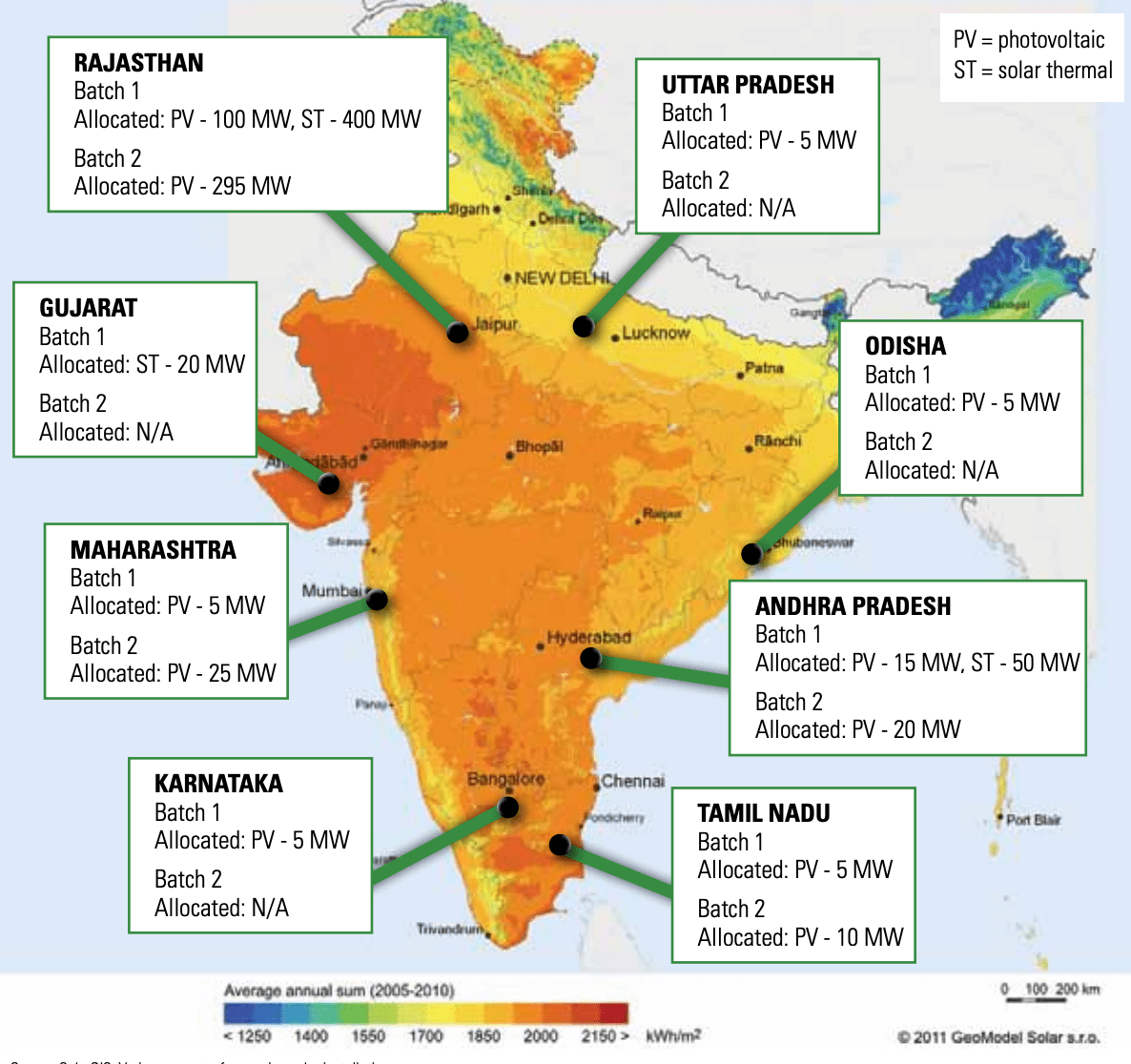Report
Laying the Foundation for a Bright Future
Assessing Progress Under Phase 1 of India’s National Solar Mission
CEEW, NRDC
April 2012 | Energy Transitions
Suggested Citation: Council on Energy, Environment and Water and Natural Resources Defense Council. 2012. Laying the Foundation for a Bright Future: Assessing Progress Under Phase 1 of India’s National Solar Mission. New York, New Delhi: Natural Resources Defense Council and Council on Energy, Environment and Water.
Overview
This report focuses on the key aspects of the solar ecosystem - commissioning projects under phase 1 of the National Solar Mission, increasing bankability, developing a manufacturing base, and creating an enabling environment. Addressing these challenges, it presents findings and recommendations to scale grid-connected solar energy development. The report adopts a ‘whole-of-system’ approach, which identifies multiple stakeholders operating within the Mission and analyses their successes and challenges.
5 MW grid-connected photovoltaic plant developed under the NSM by Welspun Solar AP Pvt. Ltd., installed in Pulivendula, YSR District, Andhra Pradesh

Key Highlights
- Infrastructure, policy, and market conditions are shaping India’s solar market differently from other solar markets. Unique attributes include the prevalence of ground-mounted solar parks, thin-film PV technology used in more than half the projects and low bid prices that make grid parity possible in the near future.
- Stakeholders viewed the reverse auction bidding process as transparent and successful in driving down prices.
- Financial institutions, civil society groups, and developers suggest that in order to draw serious players with an ability to ensure project completion and attract financing, the project selection criteria should be more rigorous.
- Indian bankers still perceive significant risks in the solar energy market and are largely hesitant to make substantial investments in solar technologies.
- International lenders, less risk-averse on the technology front, offer lower interest rates but remain sceptical about project completion.
- To bolster confidence among financiers, a range of funding channels, financial institutions, and other stakeholders must coordinate at program and project levels and provide ancillary support, such as R&D and skill development, to help the solar market mature.
- State policies have contributed to boosting solar projects in the last two years, especially in Gujarat and Rajasthan.
- For Phase 2, the central government needs to increase collaboration with states to facilitate renewables purchase obligation (RPO) and renewable energy certificate (REC) compliance, project bidding, financing, power evacuation, transmission, and land acquisition.
Rajasthan and Gujarat, which are endowed with the highest irradiation, led phase 1 installations

Source: Solar-GIS; Various reports of upcoming solar installations
- While the domestic content requirement (DCR) has garnered international attention and raised concerns among some foreign stakeholders, most developers do not identify it as a major barrier to project development.
- The case for a robust domestic manufacturing base rests on multiple objectives: energy security, technology development, energy access, ensuring product standards, attracting foreign investment, and creating jobs.
- To protect local interests and the environment, developers and government agencies need to increase community involvement in the decision-making process, from project planning to operations.
- Many developers have faced difficulties in obtaining clearances to convert land use for solar project development and encountered claims by other parties to government-allocated land.
Key Recommendations
- Enforce RPO mandates and the REC (Renewable Energy Certificate) market. National and state agencies should work together to ensure RPO and REC systems.
- Government agencies and private groups should provide solar resource and project deployment data as soon as they become available.
- The Solar Advisory Panel and leading financial institutions should create a network of solar finance leaders to develop bank products that support solar energy.
- Explore whether incentivising policies with a broader scope than solely cell and module manufacturing would capture more value and create more solar jobs within the Indian context.
- Manufacturers should strengthen existing networks, such as SEMI, to explore ways to ease barriers to manufacturing in India.
- The Ministry of New and Renewable Energy should work with the Ministry of Environment, Forests and Climate Change to strengthen environmental safeguards to ensure that manufacturing can continue to grow rapidly while protecting community health and the environment.
The most important intervention under the National Solar Mission would be to create a common platform to bring together multiple stakeholders to review progress and learn from both successful projects and those facing challenges.







